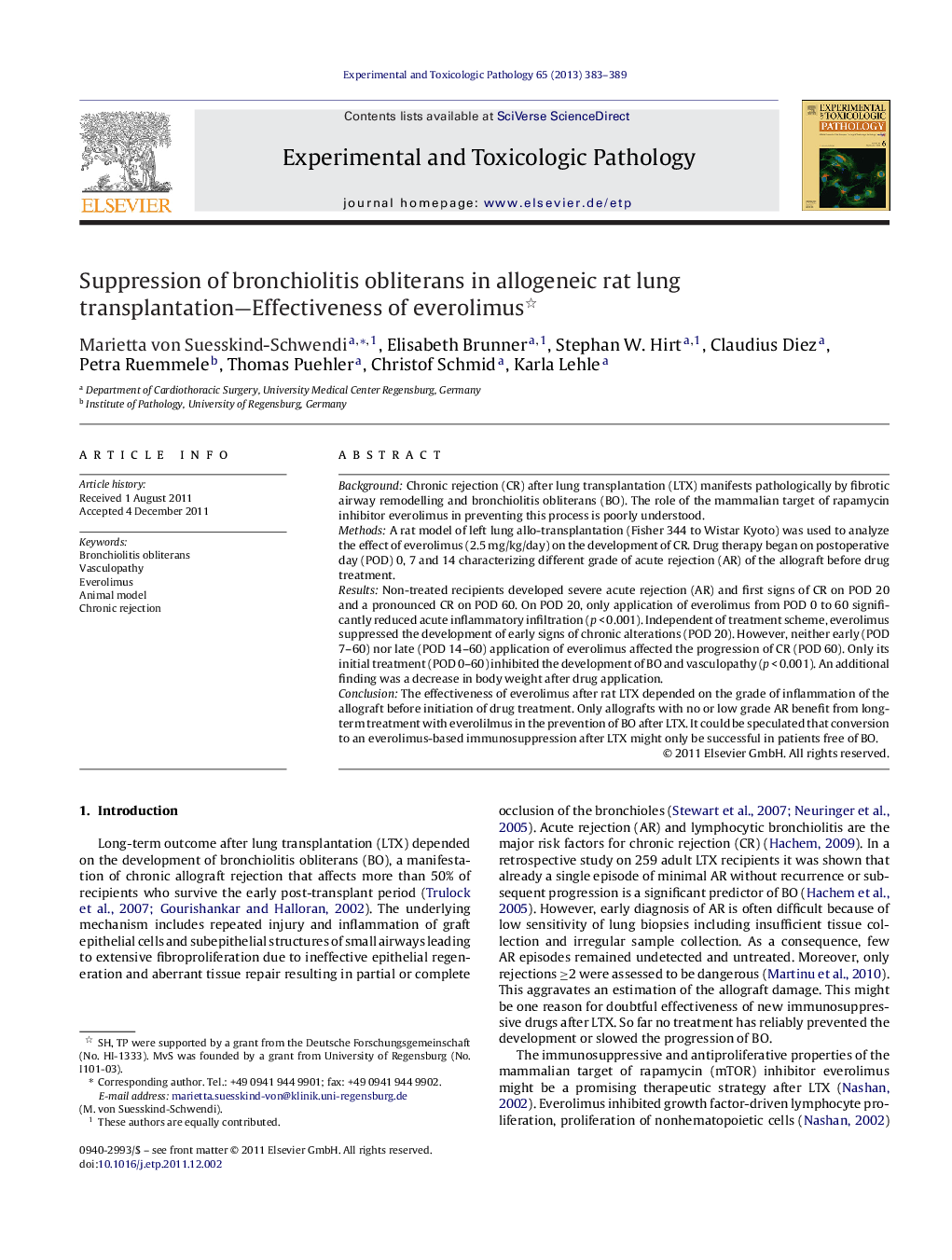| کد مقاله | کد نشریه | سال انتشار | مقاله انگلیسی | نسخه تمام متن |
|---|---|---|---|---|
| 2499069 | 1116491 | 2013 | 7 صفحه PDF | دانلود رایگان |

BackgroundChronic rejection (CR) after lung transplantation (LTX) manifests pathologically by fibrotic airway remodelling and bronchiolitis obliterans (BO). The role of the mammalian target of rapamycin inhibitor everolimus in preventing this process is poorly understood.MethodsA rat model of left lung allo-transplantation (Fisher 344 to Wistar Kyoto) was used to analyze the effect of everolimus (2.5 mg/kg/day) on the development of CR. Drug therapy began on postoperative day (POD) 0, 7 and 14 characterizing different grade of acute rejection (AR) of the allograft before drug treatment.ResultsNon-treated recipients developed severe acute rejection (AR) and first signs of CR on POD 20 and a pronounced CR on POD 60. On POD 20, only application of everolimus from POD 0 to 60 significantly reduced acute inflammatory infiltration (p < 0.001). Independent of treatment scheme, everolimus suppressed the development of early signs of chronic alterations (POD 20). However, neither early (POD 7–60) nor late (POD 14–60) application of everolimus affected the progression of CR (POD 60). Only its initial treatment (POD 0–60) inhibited the development of BO and vasculopathy (p < 0.001). An additional finding was a decrease in body weight after drug application.ConclusionThe effectiveness of everolimus after rat LTX depended on the grade of inflammation of the allograft before initiation of drug treatment. Only allografts with no or low grade AR benefit from long-term treatment with everolilmus in the prevention of BO after LTX. It could be speculated that conversion to an everolimus-based immunosuppression after LTX might only be successful in patients free of BO.
Journal: Experimental and Toxicologic Pathology - Volume 65, Issue 4, May 2013, Pages 383–389